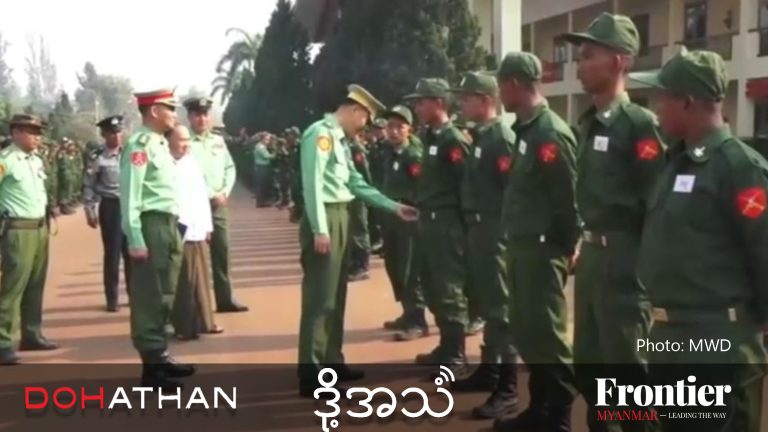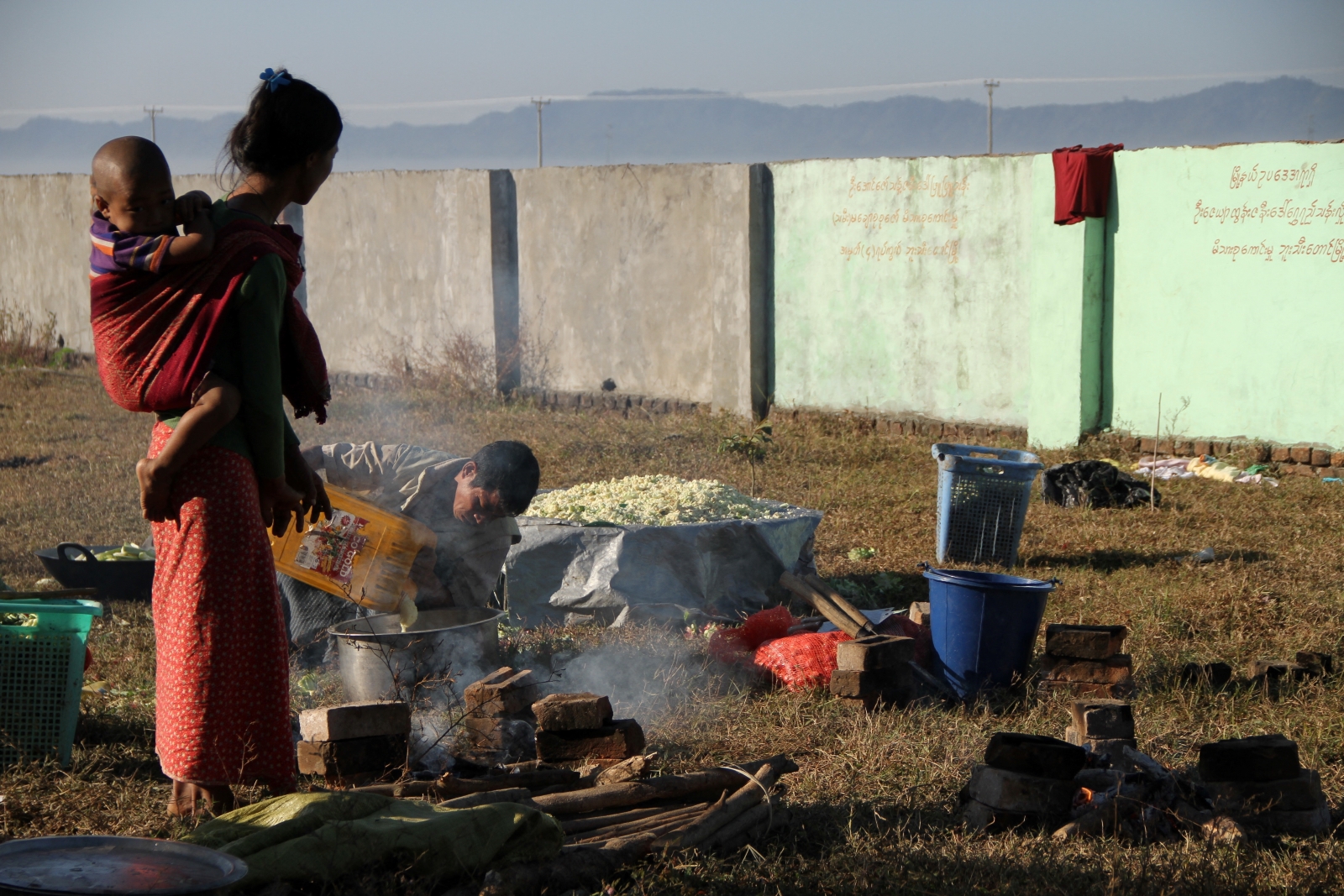About 1,300 villagers have crossed from Chin State to India to escape fighting between the Tatmadaw and Arakan Army insurgents, an Indian newspaper reported on Tuesday.
The men, women and children have taken refuge at four villages in remote, mountainous southern Mizoram State and were receiving shelter and relief from the authorities, the Hindu said.
The report indicated that the villagers had been displaced by fighting around Paletwa in southern Chin, near its border with Rakhine State.
It said those who crossed the border were Buddhists and Christians who spoke the same tribal language as southern Mizoram residents.
The report quoted an official in Mizoram’s Lawngtlai district as saying it was the fourth time in the recent past that people had crossed the border from Myanmar to escape unrest.
Support more independent journalism like this. Sign up to be a Frontier member.
In one of the most serious encounters, a report earlier this month said at least 11 members of the Tatmadaw were killed and 14 injured in a clash with the Arakan Army near Paletwa.
The casualties occurred when the AA fired on a boat on the Kaladan River, the Irrawaddy reported on November 9, quoting Pyithu Hluttaw MP U Thaung Aye (Union Solidarity and Development Party, Pyawbwe), a retired Tatmadaw lieutenant-general.
The report said fighting between the two sides had escalated since the first week of November, with clashes in two villages north of Paletwa on November 8.
There have also been reports of recent fighting between the two sides in northern Rakhine.
The Arakan Army has become increasingly active in Rakhine and Chin in recent years, with frequent clashes with the Tatmadaw.
The AA was formed in 2008 and its objectives include self-determination for “the multi-ethnic Rakhine population”, says the 2016 edition of Deciphering Myanmar’s Peace Process: A Reference Guide.
The Arakan Army is an ally of the Kachin Independence Army, which has trained about half of its troops. Although it has temporary headquarters in KIA-controlled areas, its operational areas include Kyauktaw, Mrauk-U and Myinbya in Rakhine, as well as around Paletwa.
The KIA, AA, Ta’ang National Liberation Front and Kokang-based Myanmar National Democratic Alliance Army comprise the Northern Alliance, none of whose members signed the 2015 Nationwide Peace Agreement.
The Shan State Hluttaw declared the Northern Alliance a “terrorist organisation” last year after it launched a brazen attack on the Muse border trade zone and temporarily blocked the Mandalay-Lashio-Muse highway.






